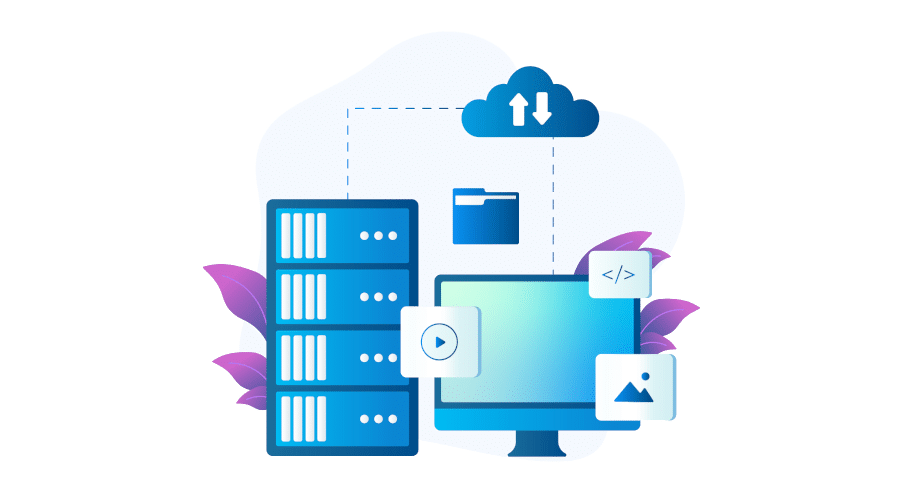Available in over 200 countries and territories, PCM is now one of the most popular public cloud services. More and more companies are using this platform for their applications and infrastructures. And to manage them properly, they need high-performance monitoring tools. This is precisely the role of Google Cloud Platform Monitoring. What does it do? What are its features and benefits? You'll find the answers in this article.
What is GCP Monitoring?
Google Cloud Platform Monitoring is the essential tool to help companies manage all their applications and infrastructures on the Google Cloud Platform. Thanks to this solution, they can monitor all metrics (performance, availability and status indicators), events and metadata from Google Cloud.
What are the features of Google Cloud Monitoring?
SLO surveillance
Google Cloud Platform Monitoring offers organizations comprehensive monitoring of their various metrics, also known as SLI (Service Level Indicator). For example: number of requests per minute, URL availability or response latency.
The idea is to help them optimize the service levels of their applications and infrastructures. To achieve this, SLOs (Service Level Objectives) can be defined. This is the target value that the SLI must reach. If SLOs are not met (i.e. are unsatisfactory), organizations receive an alert to make the necessary adjustments.
Of course, the required performance levels cannot be achieved immediately. That’s why we recommend defining a margin of error. In other words, an acceptable level of failure during a compliance period.
💡Related articles:
Google Cloud integration
On the one hand, GCP Monitoring automatically integrates with Google Cloud resources and services. This means that various metrics can be detected and monitored without any additional configuration.
Secondly, Google Cloud Monitoring integrates with other tools. For example, with Managed Service for Prometheus or the Ops agent, you can easily manage all the metrics collected for Kubernetes and virtual machines.

Dashboards
Google Cloud Platform Monitoring automatically integrates dashboards to give organizations greater visibility into the use of their GCP resources and services.
But beyond these ready-to-use dashboards, it is also possible to customize these dashboards according to one’s SLI and SLO. This is particularly useful for organizations wishing to display information on multiple services.
Whichever option you choose, these tools make it easy to visualize and analyze data from different sources.
Compatibility with several Google Cloud projects
With GCP monitoring, companies can monitor one or more projects simultaneously (and even several projects within several organizations).
To do this, you need to define the scope of metrics and create resource groups. The latter then enable relationships to be established between resources, according to their names, tags, regions, accounts…
In this way, it will be easier to create dashboards showing the various metrics for these multiple projects.
What are the advantages of Google Cloud Platform Monitoring?
The diversity of features provided by GCP enables organizations to reap a multitude of benefits:
- Compatibility: Google Cloud Platform Monitoring is compatible with other hybrid and multi-cloud environments. This means that organizations can monitor all metrics from these different environments.
- Ease of use: to facilitate the management of applications and infrastructures on GCP, Cloud Monitoring offers ready-to-use dashboards. This enables data to be collected automatically.
- Decision-making: GCP Monitoring displays all essential metrics, events and metadata in real time. As a result, companies can easily identify problems in their application or infrastructure, and also discover new business models.
- Efficiency: in addition to monitoring all available metrics (performance, uptime…), GCP Monitoring also lets you create dashboards and configure alerts when predefined thresholds are crossed. This saves organizations valuable time when managing their infrastructure on Google Cloud Platform.
Get GCP training with DataScientest
Although Google Cloud Platform is not the world’s leading cloud service (it ranks 3rd after AWS and Azure), it is increasingly used by businesses.
DevOps, data analysts and data engineers with GCP skills are in great demand. But to master this tool, you need to be trained. There are a number of ways to do this: take GCP certifications, or follow a professional training course that provides you with all the knowledge you need to use Google Cloud Platform Monitoring.
This is precisely the case with our training courses at DataScientest. In addition to GCP, you can also master AWS or Microsoft Azure (the other essential cloud services).











